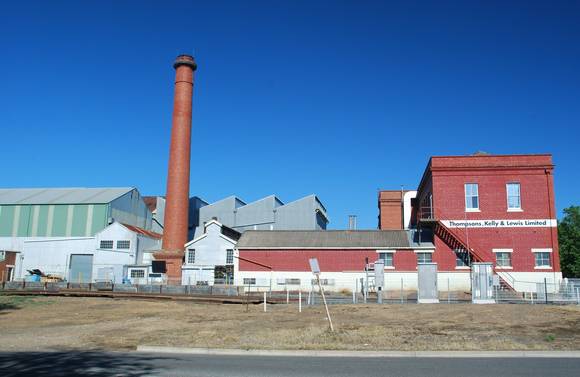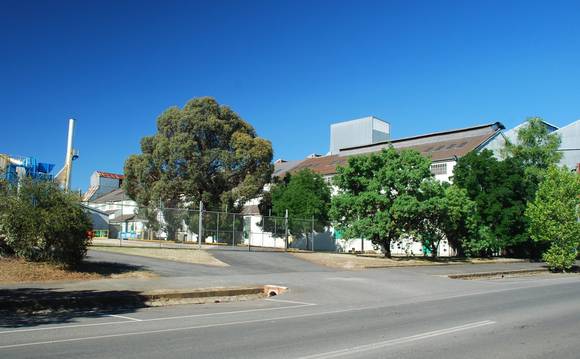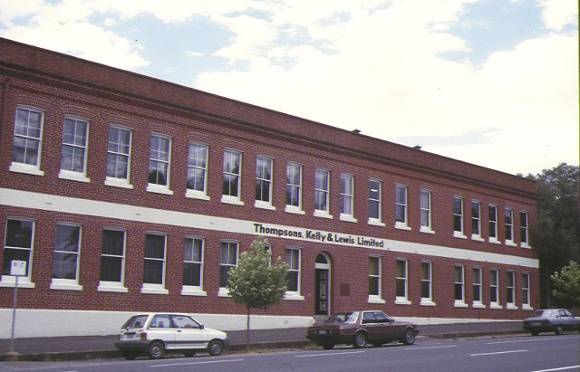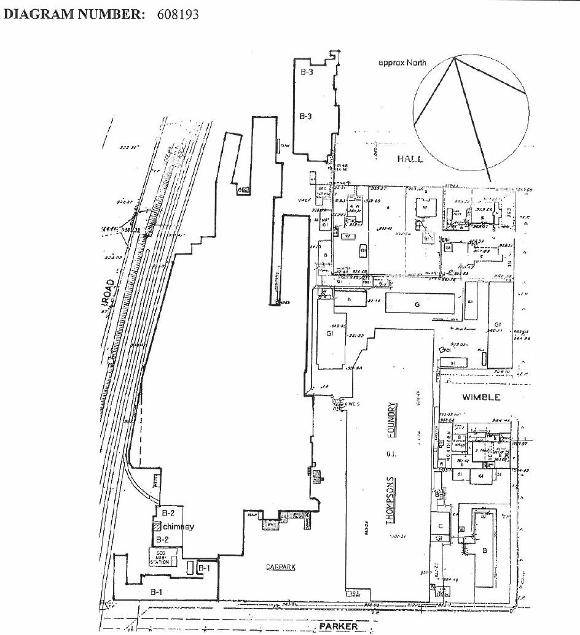| Back to search results » | Back to search page » |
|
THOMPSONS KELLY & LEWIS ENGINEERING WORKS
Other NameTHOMPSONS FOUNDRY (FORMER) Location5 PARKER STREET CASTLEMAINE, MOUNT ALEXANDER SHIRE
File Number608193LevelRegistered |
|
Statement of Significance
What is significant?
Thompson's Foundry was established in 1875 as an engineering workshop by brothers David and James Thompson. They set up their foundry beside the buildings they had been using as a flour mill since 1864, expanding the facilities in 1879 and 1881 to meet growing demand. Between 1912 and 1915 the premises increased considerably in size to accommodate workshops for the manufacture of steam locomotives for the Victorian Railways. The corrugated iron foundry building dates from this period. The large brick chimney stack was built in 1919. A section of the two storey, tuck-pointed brick building, now housing the main office, was part of the original flour mill complex on the site. It was gutted by fire in 1905 and extended and altered in later years. The brick Rail Fastener Shop was originally built as a Brass Foundry by the Commonwealth government during the Second World War. During the war the engineering works was engaged in the production of marine engines, steam turbines, forgings, armaments and munitions. At that time eight hundred men were employed on the premises.
Thompsons became a limited liability company in 1913. In 1924-25 the Thompson family surrendered control of the company and it was restructured as Thompson's Engineering and Pipe Company. After several changes of ownership since 1947, the company is now known as Thompsons, Kelly & Lewis Pty Ltd (a subsidiary of BTR Nylex Ltd) formed in 1987 by the merger of Thompsons with another heavy engineering firm of long standing, Kelly & Lewis.
How is it significant?
Thompson's Foundry has historical, scientific and architectural significance to the state of Victoria.
Why is it significant?
Thompson's Engineering Works has historical significance for the important role it has played in the development of an engineering and manufacturing industry in Australia. The company became one of the major manufacturing industries in Victoria and throughout Australasia, designing and manufacturing machinery, sluicing and dredging equipment for the mining industry, pumping plants and equipment (including equipment for the Spotswood Pumping Station), railway points and crossings and steam locomotives. The company continues to operate as a major designer, manufacturer and supplier of pumps and railway products in Australia. It is one of only a few survivors of the many engineering companies formed in nineteenth century Victoria, the then hub of manufacturing.
The engineering works has associations with notable figures in the history of engineering in Victoria. David Thompson (1828-1889) arrived in Australia from his native Ireland in 1852 and was joined by his brother James the following year. The brothers set up the foundry in 1875. David Thompson Jnr (1865-1916) served his apprenticeship at the works, eventually becoming manager after the death of his uncle in 1910. He developed the business into one of the largest and best equipped engineering works in Australia. An early works manager at Thompsons, E P Lewis, was one of the founders of another important engineering firm, Kelly & Lewis (merged with Thompsons in 1987). John Gurner Burnell (1885-1967) was General Manager of the works from 1925 to 1957. The development of Thompsons as a leading manufacturer of high-efficiency pumps owes much to JG Burnell's technical expertise and leadership.
Thompson's Engineering Works has architectural significance as a large and prominently situated factory complex built and extended over a period of more than 120 years. The extensive buildings demonstrate the development of this important engineering works, one of the largest of its kind in the state. The towering 1919 chimney stack, a prominent landmark in Castlemaine, is architecturally significant for its fine brickwork.
The 1919 chimney stack with its associated boiler and engine house is scientifically and historically significant for its long association with generation of power for the site.
Group
Manufacturing and Processing
Category
Foundry Iron/Brass







